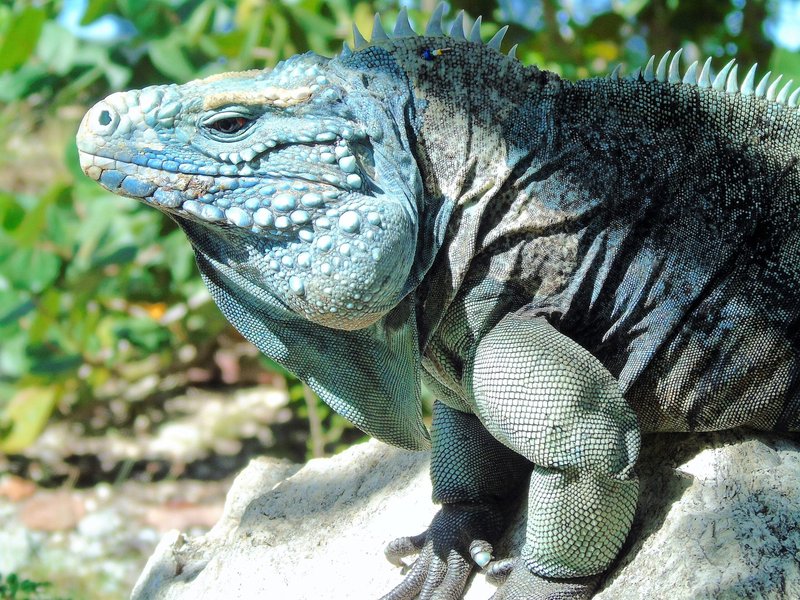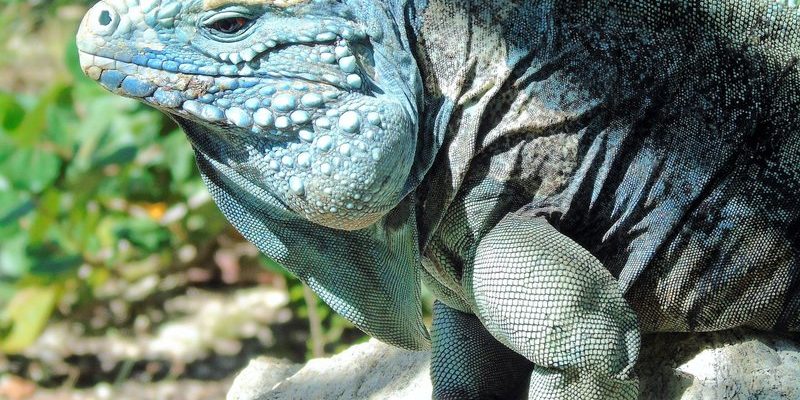
Let’s break this down over coffee. Conservation is like tending a garden. You have to water, nurture, and protect your plants to ensure they thrive. For iguanas, that means understanding the issues they face and the efforts put in place to keep them around for future generations. So, let’s dive in and explore what’s happening with iguanas—why they might be endangered and how conservationists are stepping in to help.
Understanding Iguana Species and Their Status
Not all iguanas are created equal, and when we talk about their conservation, we have to look at different species. The most well-known species are the Green Iguana and the Marine Iguana. While the Green Iguana is widespread throughout Central and South America, the Marine Iguana, found only in the Galapagos Islands, is a bit more special and threatened.
Here’s the thing: some iguanas are more vulnerable than others. According to the International Union for Conservation of Nature (IUCN), several species are listed as endangered or critically endangered. This classification often stems from habitat loss, hunting, and the pet trade. For example, the Rhinoceros Iguana is facing significant threats mainly due to habitat destruction from human activity.
Common Threats to Iguanas
So, what’s putting these beautiful reptiles at risk? Here are a few main culprits:
- Habitat Loss: As cities expand, forests and natural habitats are cleared. This means iguanas have fewer places to live, hide, and find food.
- Illegal Trade: Sadly, many iguanas are captured and sold in the pet trade, sometimes leading to declining populations in the wild.
- Climate Change: Rising temperatures and changing weather patterns affect the habitats iguanas rely on, pushing them into precarious situations.
It’s important to remember that iguanas are not just stuck in one place. They have specific habitats that provide them with food and shelter. When these environments change or disappear, iguanas struggle to survive, much like how a plant wilts without water.
The Role of Conservation Efforts
Now that we understand the threats, let’s talk about what’s being done to protect iguanas. Conservation efforts are like a safety net, allowing these creatures a chance to bounce back from the edge. Here are a few key strategies:
- Habitat Preservation: Organizations work to protect and restore natural habitats. This is crucial because iguanas need a healthy environment to thrive.
- Legal Protections: Many countries have laws in place to protect endangered iguana species from hunting and illegal trade.
- Public Education: Raising awareness among local communities helps people understand why iguanas matter. This can reduce conflicts between humans and reptiles.
Each of these efforts is a step toward ensuring that future generations can enjoy the sight of iguanas in the wild. It’s similar to how we might adopt a puppy and train it; we need to give iguanas the proper care so they can thrive in their natural environment.
Successful Conservation Stories
It’s not all doom and gloom! There are some inspirational success stories in iguana conservation. For example, the Galapagos National Park has implemented strict regulations to protect the Marine Iguana. These efforts have led to an increase in their population over the past few years. Just imagine a small island where conservationists work hand in hand with the local community. It’s kind of like a team effort to ensure everyone wins.
Similarly, programs in places like the British Virgin Islands focus on breeding and reintroducing the critically endangered Anegada Rock Iguana back into their natural habitat. The progress being made shows that with the right approach and dedication, we can make a difference.
What Can You Do to Help?
You might be thinking, “That’s great, but what can I do?” You don’t need to be a scientist to make an impact. Here are a few simple steps you can take to help iguanas and other wildlife:
- Support Conservation Organizations: Consider donating to or volunteering with groups focused on wildlife conservation.
- Spread Awareness: Talk to friends and family about the importance of protecting iguanas and their habitats.
- Choose Sustainable Practices: Use products that support habitat conservation, such as eco-friendly goods.
Small actions can lead to significant changes. It’s like planting a seed; with care, it can grow into something magnificent.
In exploring whether iguanas are endangered, it’s clear that these creatures face numerous challenges—from habitat loss to illegal trade. However, there’s hope. The ongoing conservation efforts show that with teamwork and commitment, we can give iguanas a fighting chance.
As you sip your coffee, remember that our choices matter. Every small action counts in protecting not just iguanas, but all wildlife. So, the next time you see one of these amazing reptiles, think about their journey and the importance of keeping their world safe. Together, we can make sure that the sound of iguanas rustling in the trees continues for generations to come.

